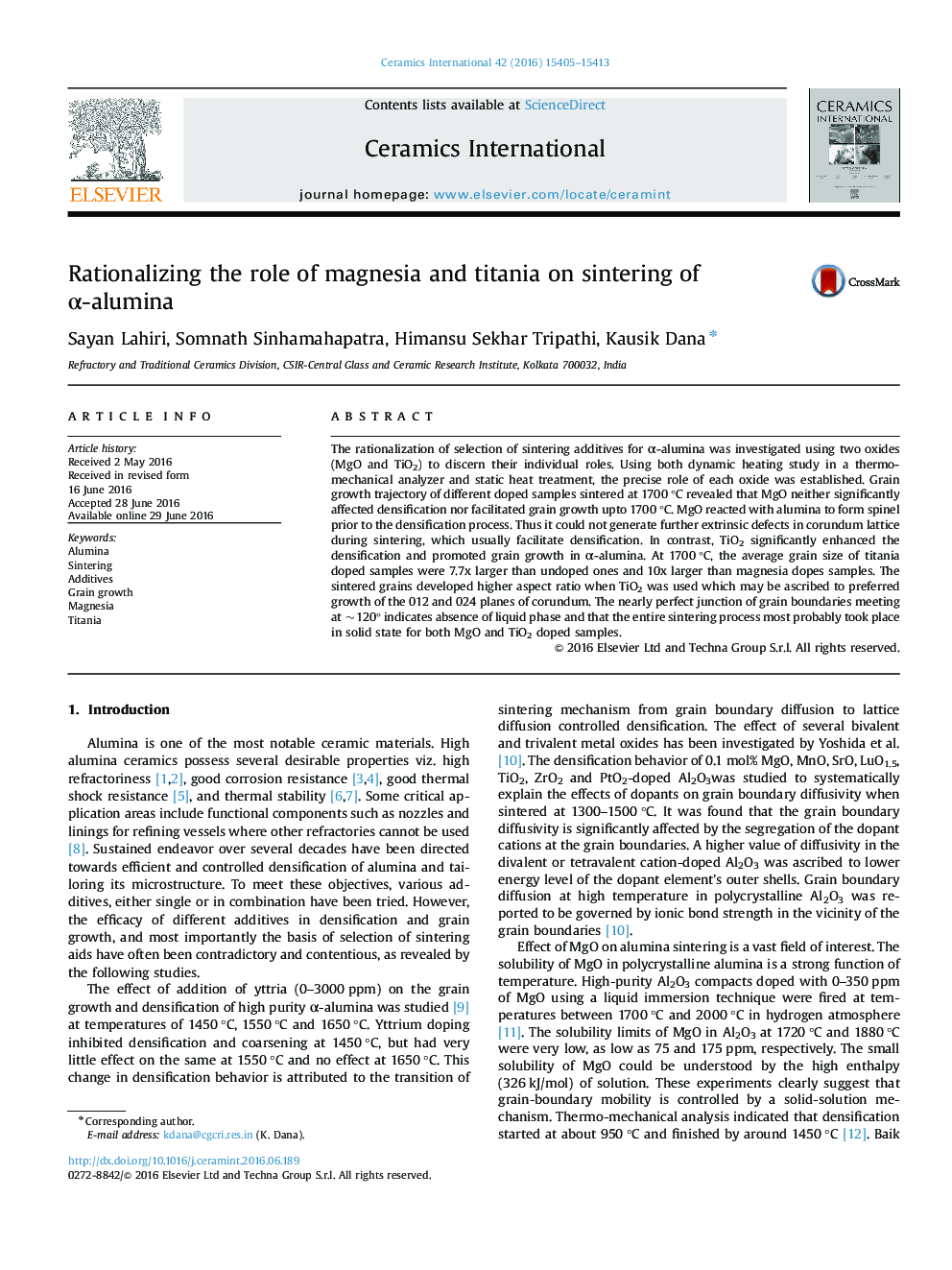| Article ID | Journal | Published Year | Pages | File Type |
|---|---|---|---|---|
| 1458419 | Ceramics International | 2016 | 9 Pages |
The rationalization of selection of sintering additives for α-alumina was investigated using two oxides (MgO and TiO2) to discern their individual roles. Using both dynamic heating study in a thermomechanical analyzer and static heat treatment, the precise role of each oxide was established. Grain growth trajectory of different doped samples sintered at 1700 °C revealed that MgO neither significantly affected densification nor facilitated grain growth upto 1700 °C. MgO reacted with alumina to form spinel prior to the densification process. Thus it could not generate further extrinsic defects in corundum lattice during sintering, which usually facilitate densification. In contrast, TiO2 significantly enhanced the densification and promoted grain growth in α-alumina. At 1700 °C, the average grain size of titania doped samples were 7.7x larger than undoped ones and 10x larger than magnesia dopes samples. The sintered grains developed higher aspect ratio when TiO2 was used which may be ascribed to preferred growth of the 012 and 024 planes of corundum. The nearly perfect junction of grain boundaries meeting at ~120° indicates absence of liquid phase and that the entire sintering process most probably took place in solid state for both MgO and TiO2 doped samples.
